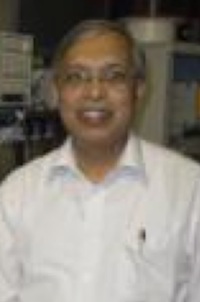Cambridge 7th to 9th September

Presenting Author:
Ajoy Kumar Kar
article posted 17 June 2015
Ajoy Kumar Kar
Professor Ajoy Kar has over 30 years of experience in studies of the nonlinear optical properties of materials and their applications. After completing his MSc at Delhi he joined the University of Essex where he developed his interest in Lasers and Nonlinear Optics. His current projects involve amplifiers for telecommunications, ultrafast all-optical switching in novel optical fibres, ultrafast optical nonlinearities in semiconductors, ultrafast laser inscription (ULI) of photonic devices that should result in novel optoelectronic devices and generation of white light continuum from visible to mid-infrared part of the spectrum. Recently he is applying the principles of nonlinear optics to develop novel microfluidic devices for biophotonics applications. These devices will incorporate 3-dimensional optical waveguides, to enable sorting, growth, maintenance and assay of primary cells. The first cell sorter using ULI have already developed. He has pioneered the Photonics Education in the UK and Europe.

3D Nonlinear Chalcogenide Devices
Ajoy Kumar Kar
Chalcogenide glasses are highly transparent in the mid infrared (mid-IR); in addition they also exhibit high nonlinear refractive index up to ~500 times that of fused silica, low-multi-photon absorption and high photosensitivity. These properties, coupled with an ability to act as laser hosts via the incorporation of rare earth ions, make chalcogenide glasses ideal candidates for a range of mid-IR devices such as nonlinear optical switching, Kerr shutter, supercontinuum sources and high power tuneable mid-IR sources. These devices will find direct applications in biomedical science, directed infrared counter-measures, gas sensing applications and laser material processing.
There are several reports on the fabrication of non-silica fibers and fiber tapers for octave spanning supercontinuum extending into the mid-IR. However, chalcogenide fibers are difficult to fabricate with low loss and are difficult to handle. Attempts to fabricate chalcogenide waveguides in the past have included fine embossing, liquid processing via capillary channel formation and direct pulsed laser deposition, however these techniques involve several stages of heating and processing resulting in high scattering losses. Here we have utilised the ultrafast laser inscription (ULI) technique to fabricate single-mode waveguides embedded in a GLS substrate.
ULI is a powerful fabrication technique, which relies on the nonlinear absorption of sub-bandgap photons to induce permanent structural changes to a material. These changes can manifest themselves in multiple ways including a change in refractive index and/or an increased chemical etch rate. Since ULI relies on a nonlinear absorption mechanism, the induced modification can be localised to the high intensity region at the focus of an ultra short pulse train. This gives ULI the unique advantage over other waveguide fabrication techniques of being capable of forming 3-D structures.
Fundamental nonlinear properties of the GLS have been exploited to fabricate 3-D photonic devices in the mid infrared using ULI. In my talk I will present how the ultrafast laser inscription has been utilised in the development of the photonic devices like mid-IR lasers and supercontinuum sources in the novel chalcogenide glasses
